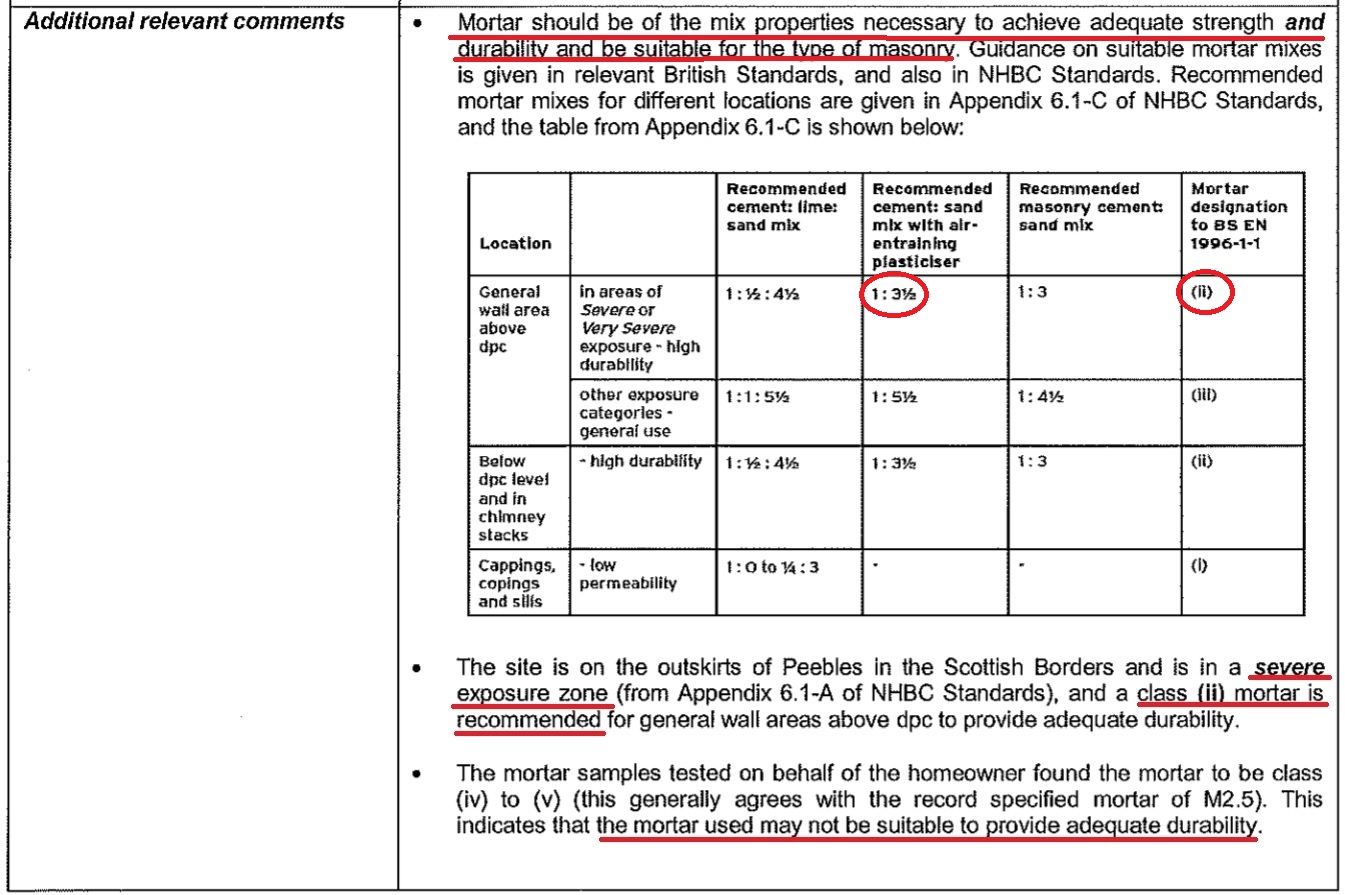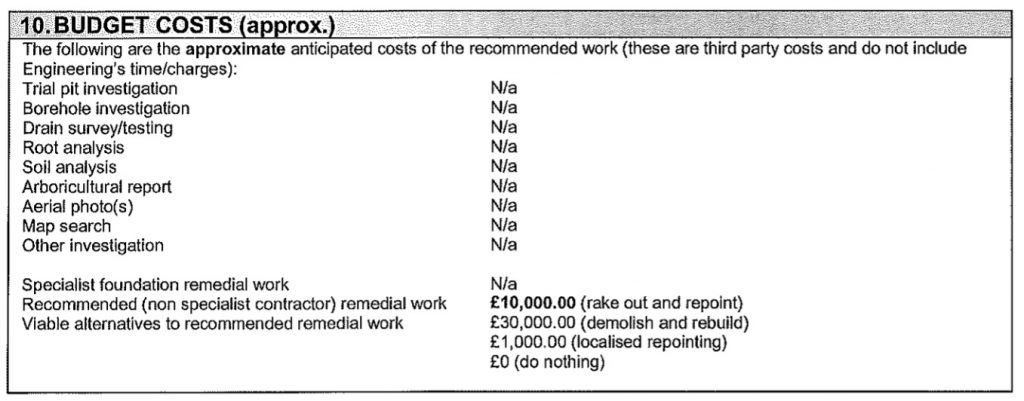The New Homes Quality Board [NHQB] – Code of Practice
Pre Completion Inspection Requirement 2.8 & 2.11 (C)
 The stand out requirement of the New Homes Quality Board’s Code of Practice is the right for new homebuyers – or their “suitably qualified inspector” – to carry out a Pre-Legal Completion Inspection of their new home.
The stand out requirement of the New Homes Quality Board’s Code of Practice is the right for new homebuyers – or their “suitably qualified inspector” – to carry out a Pre-Legal Completion Inspection of their new home.
An industry Code of Practice was originally recommended following an APPG EBE inquiry with recommendation (5) in their report, “Better Redress for Homebuyers” published in June 2018 stating “Industry-wide code of practice: We are recommending that government, warranty providers, housebuilders and consumer groups work together to draw up a code of practice which would be used by the New Homes Ombudsman to adjudicate on disputes.”
The Government Consultation on Redress for purchasers of new build homes published 24 February 2020, again championed the idea of a Code of Practice and referenced the responses of individuals who wanted access for inspections ahead of legal completion. The Government consultation report stated on Page 42 (203) “there were also concerns regarding pre-completion surveys in that it would not provide an effective remedy. It was highlighted that the potential for such surveys may create practical difficulties in the housebuilding process and lead to delays in delivering new homes” Probably why the final Code of Practice now clarifies that the Pre-Completion Inspection “does not operate to delay or prevent Legal Completion.”
 A pre-legal completion inspection must be carried out from five calendar days after the ‘notice to complete’ has been served and before legal completion. But this new ‘Right’ has strings attached as the plc house builder’s influencing paw prints are all over it! Firstly, any inspection by the customer or their snagging inspector must be carried out using the NHQB “Template Pre-Legal Completion Checklist.” the prescribed template checklist referred to in the Code is the only checklist that may be used.
A pre-legal completion inspection must be carried out from five calendar days after the ‘notice to complete’ has been served and before legal completion. But this new ‘Right’ has strings attached as the plc house builder’s influencing paw prints are all over it! Firstly, any inspection by the customer or their snagging inspector must be carried out using the NHQB “Template Pre-Legal Completion Checklist.” the prescribed template checklist referred to in the Code is the only checklist that may be used.
This means that defects and snags not specifically included in the Pre Legal Completion Inspection Checklist will potentially and in all likelihood, not be accepted and rectified. Quiet how one standard bullet-point checklist will be effective for every plot, on every development, for every house builder, using different contractors remains to be seen.
In addition, as previously mentioned, “The Pre-Completion Inspection Checklist does not operate to delay or prevent Legal Completion.” In other words, new homebuyers will still be expected to Legally Complete on a defective home with snags, even though some or all of the noted items may not have been successfully addressed. “Developer guidance” suggests that any defects should be rectified within 30 calendar days after legal completion. Why is a Code, presumably designed to protect new homebuyers, actually facilitating plc house builders to require buyers to legally complete the purchase of their new home with existing known defects? Then subsequently, experiencing the inconvenience and mess with various contractors working in what is now their home, rather than delaying legal completion until such times as a de-snagging inspection confirms all defects have been attended to and properly rectified.
Also suspicious is the allowance for the pre-legal completion inspection to take place at the same time as the home demonstration. 2.11 (d). Clearly, it is not desirable for any builder’s representative to be present and able to distract, hide and/or counteract any perceived snagging defect with “it’s within tolerance”. Even if the home demonstration is carried out at a different time, it is stipulated in the NHQB “Developer Guidance” that “the developer may accompany the customer (or their representative) during the inspection.”
Finally, the term “suitably qualified inspector” has been clarified in the “Developer Guidance“ and must:
- Be a member of a recognised professional association undertaking surveying services in the residential housing sector;
- Hold relevant PI insurance; and
- Only work within their competency (but quite how this will be assessed or enforced!)
 Why? Many professional snagging inspectors have been producing accurate, detailed defect reports for decades on behalf of new homebuyers. I believe this stipulation is to limit the choice an availability of inspectors that meet the industry’s criteria and ultimately driving up the cost of an inspection, thus putting off many buyers.
Why? Many professional snagging inspectors have been producing accurate, detailed defect reports for decades on behalf of new homebuyers. I believe this stipulation is to limit the choice an availability of inspectors that meet the industry’s criteria and ultimately driving up the cost of an inspection, thus putting off many buyers.
I asked Martyn Maxwell of New Build Inspections, a company that has been inspecting new homes for homebuyers for over 20 years what his opinion is of this. Martyn said he is in favour of setting up an association of snagging inspectors as it would “keep the cowboys out”.
MM. “Who going to check qualifications of inspectors when they arrive on site?”
NHE. I would expect some sort of recognised card and registration will be required for all new home inspectors. Perhaps operating in a similar way to the site safety CSCS scheme, with a charge and a body making money out of administering it.
MM. “Would membership of for example the RICS outweigh a lifetime of onsite experience?”
NHE. Not in my opinion. I do not believe an RICS surveyor would note little more than the average new homebuyer would. Add in they are inspecting off the NHQB standard and limited checklist anyway, you really do have to ask why any membership of a professional association is being required, other than to restrict buyer ‘s choice.
Martyn also believes that “grandfather rights should be accepted for those competent practitioners in the industry who are not or don’t want to be in an organisation that checks windmills and 16 century cottages”
NHE. You could also add grade II listed buildings surveys, damage reports for insurers, and mortgage valuations. I can see this would be a good income stream for many RICS surveyors, perhaps carrying out mortgage valuations and inspections in one site visit. In addition, the RICS member is likely to charge a new homebuyer more, yet not necessary include in his fee for ongoing post-inspection support.
Martyn agrees with me that any standard home inspection checklist will be ineffective:
“A simple guide to snagging aimed at homebuyers and not rocking boat for builders. How can homebuyers know building regulations. This snagging checklist will likely be aimed at cosmetics only. Homebuyers checking their own homes is just what the house builders want. The NHQB played straight into builder’s hands in my opinion”
Martyn also raised some interesting points which do not look to have been considered by the NHQB regarding their mandatory, ‘one-size-fits-all’ Pre-Legal Completion Inspection Checklist.
MM. “Which or whose standards are we going to be checking against?
Whilst it is OK having a list of things to check, what will they be checked against?”
NHE. Good point. I believe it will be the opinion of the inspector as it is now. No two people will produce the same snagging list for any given property inspection. I think the NHBC “A Consistent Approach to Finishes” which is used to judge the extent of bad workmanship when it can be physically measured.
MM. “Will all the warranty companies and all the builders suddenly have the same standards?”
NHE. Clearly not. I believe the adopted ‘gold standard’ will be NHBC warranty standards and of course the legal requirements of the Building Regulations. However, most defects and snagging items found during buyer’s on professional inspections are usually beyond these stated minimum standards.
MM. “Are house builders going to advise homebuyers of their right to have a pre completion inspection as it will never be in the builders’ interests?”
NHE. Yes they will be required to. The Code Fundamental Principles (7) Independence states: “Make sure that customers are aware that they should appoint independent legal advisors when buying a new home and that they have the right, as set out in the Code to an independent pre-Completion inspection before legal Completion takes place”
MM. “What sanctions are there if house builders don’t?”
NHE. That’s the million-pound question! Basically a new homebuyer will be able to claim (and get awarded) a justifiable level of compensation for inconvenience, disruption and lost earnings etc. via the New Homes Ombudsman Service [NHOS] should they suffer from extensive remedial works that result whilst defects and snags are rectified; especially if they were either unaware or denied, their right to carry out a pre-completion inspection. House builders should also be mindful that all complaints to the NHOS will be made public as currently intended.
MM. “What happens if an inspector sees something that’s wrong, but it’s not on the template Pre Completion Inspection Checklist to check?”
NHE. Exactly. AND what if he does not see something that should be noted because he is only checking from the NHQB standard Pre-Legal Completion Inspection Checklist and not thoroughly inspecting?
You can also bet your house on drone inspections of the roof, thermal imaging and air leakage tests won’t be included in the industry-created Pre-Legal Completion Inspection Checklist.
MM. “What if there is a lot of defects and snags not on the standard checklist?”
NHE. A good inspector would/should note other things on a separate sheet to give to their homebuyer client. They are after all paying for a professional inspection. However, as it currently states only the Pre-Completion Inspection Checklist can be used as a checklist it is likely any defect not on the NHQB checklist will be accepted.
Will it be for example: “Check the roof space” Or “Check the Roof space for: missing insulation, extractor ducting not connected, restraint straps fitted and fixed, roof ventilation, roof bracing, water tanks and pipes lagged, fire stopping to party gable walls?”
A big difference. It will only become apparent, when the NHQB Pre Completion Inspection Checklist is eventually published, whether it is a basically useless industry stitch-up, or practical.
MM. “Who explains all this to the new homebuyer and helps them get the snags and defects rectified. I suggest most surveyors will want to just do the Pre Completion Inspection Checklist get paid, job done. They won’t want to bother with supporting the new homebuyer through the remedial work.?”
NHE. I can see price points for additional services being quoted for but I think a large number of inspectors will just want to do the standard inspection from the Checklist.
Martyn assumes warranties will still be in place.
 MM. “Do inspectors use warranty standards or the new standards?
MM. “Do inspectors use warranty standards or the new standards?
NHE. No new standards Martyn, just a new Code of Practice to ensure that new homebuyers aren’t as cheated and ignored by large plc house builders as they have been historically. It is still my opinion that the new Code exists to limit the effectiveness of the New Homes Ombudsman Service, which should have been for everything regarding a new home, not limited to specific breaches of an industry-created Code of Practice. It is strange that it was the government (APPG EBE and MHCLG) and not the industry that suggested a Code of Practice.
MM. “There are 13 warranty companies all with differing levels of protection. Who relays this to client?”
NHE. Code 1.2 Developer must properly inform and not mislead customers as to: (h) New Home Warranty Provisions.
Martyn told me he thinks there is and will always be a place for the snagging inspection but what’s proposed does little but paper over the cracks.
MM. “It’s the minimum the builders needed to concede to get the idea of a pre-inspection check through.”
NHE. Actually, one of the more contentious points to come out of the NHQB consultation about the draft Code was the idea of pre-completion snagging checks. The Pre -Completion Inspection Checklist was added after the consultation on the draft Code!
The suggestion of a right for new homebuyers to inspect their homes before legal completion originally came from myself when I attended the APPG EBE Inquiry into Quality of New Homes on 23rd November 2015 – I have been campaigning for a New Homes Ombudsman for 7 years.
MM. “There are lots of other good things coming through in the Bill and I’m broadly supportive but this checklist is not fit for its purpose.”
NHE. It hasn’t been made public yet as far as I am aware. But agreed there is no single snagging checklist that will suit every new home ever built.
MM. “and will actually mean the focus will switch from blaming the builder for defects in the build to blaming the checker if things go wrong using a very limited method and not declaring other issues if reporting has to stick strictly to the list?”
NHE. It could also mean more of “well it wasn’t on your own inspector’s list so it must have been damaged by the removal men or one of your household.”
MM. “On the other hand who is going to stop someone doing the specific list and then adding other points afterwards?”
NHE. The added points will not be considered by the builder as I see it at the moment.
MM. “Will the 7-day NHBC cosmetic check still apply or is this designed to replace it?”
NHE. The Buildmark warranty E13 General Exclusions :“dd) Cosmetic damage not reported to the builder within 7 days of the completion date. Examples of cosmetic damage include scratches to windows or damage to sanitary ware.”
So if an inspector misses it on inspection, it will be more difficult to imply/substantiate that the damage was done between the inspection and handover by the builder or their contractors.


















































